Experimental and Theoretical Analysis of Sound Absorption Properties of Finely Perforated Wooden Panels
Abstract
:1. Introduction
2. Materials and Methods
2.1. Materials and Preparation
2.2. Acoustic and Dynamic Mechanical Properties Measurements
2.3. Theoretical Model
3. Results and Discussion
3.1. Feasibility of Theoretical Modeling
3.1.1. Perforation-Diameter-Dependent Impedance Modeling
3.1.2. Absorption Coefficient Analysis
3.1.3. Acoustic Impedance Analysis
3.2. Influence of Wood Characteristics
3.2.1. Influence of Porous Structure
3.2.2. Influence of Sound-Induced Vibration
4. Conclusions
Acknowledgments
Author Contributions
Conflicts of Interest
References
- Fang, D.Q.; Zhang, B.; Sun, J.Q.; Lu, W.J. Noise Control. Engineering; Science Press: Beijing, China, 2013. [Google Scholar]
- Du, G.H.; Zhu, Z.M.; Gong, X.F. Fundamentals of Acoustics; Nanjing University Press: Nanjing, China, 2012. [Google Scholar]
- Ingard, U. On the Theory and Design of Acoustic Resonators. J. Acoust. Soc. Am. 1953, 25, 1037–1061. [Google Scholar] [CrossRef]
- Melling, T.H. The acoustic impendance of perforates at medium and high sound pressure levels. J. Sound Vib. 1973, 29, 1–65. [Google Scholar] [CrossRef]
- Sullivan, J.W.; Crocker, M.J. Analysis of concentric-tube resonators having unpartitioned cavities. J. Acoust. Soc. Am. 1978, 64, 207–215. [Google Scholar] [CrossRef]
- Lee, I.; Selamet, A.; Huff, N.T. Acoustic impedance of perforations in contact with fibrous material. J. Acoust. Soc. Am. 2006, 119, 2785–2797. [Google Scholar] [CrossRef]
- Kang, Z.X.; Ji, Z.L. The acoustic thickness correction of perforated plate. Acta Acust. Chin. Version 2008, 33, 327–333. [Google Scholar]
- Lin, M.D.; Tsai, K.T.; Su, B.S. Estimating the sound absorption coefficients of perforated wooden panels by using artificial neural networks. Appl. Acoust. 2009, 70, 31–40. [Google Scholar] [CrossRef]
- Crandall, I.B. Vibrating Systems and Sound; D. Van Nostrand Co.: New York, NY, USA, 1927. [Google Scholar]
- Maa, D.Y. Theory and design of microperforated panel sound-absorbing constructions. Sci. Sin. 1975, 18, 38–50. [Google Scholar]
- Maa, D.Y. Potential of microperforated panel absorber. J. Acoust. Soc. Am. 1998, 104, 2861–2866. [Google Scholar] [CrossRef]
- Sakagami, K.; Morimoto, M.; Yairi, M. A note on the effect of vibration of a microperforated panel on its sound absorption characteristics. Acoust. Sci. Technol. 2005, 26, 204–207. [Google Scholar] [CrossRef]
- Sakagami, K.; Morimoto, M.; Yairi, M. A note on the relationship between the sound absorption by microperforated panels and panel/membrane-type absorbers. Appl. Acoust. 2009, 70, 1131–1136. [Google Scholar] [CrossRef]
- Toyoda, M.; Mu, R.L.; Takahashi, D. Relationship between Helmholtz-resonance absorption and panel-type absorption in finite flexible microperforated-panel absorbers. Appl. Acoust. 2010, 71, 315–320. [Google Scholar] [CrossRef] [Green Version]
- Omran, T.A.; El-Sayed, A.B.; El-Shorbagy, K.A. Sound absorption by wood in relation to anatomical and mechanical properties. Appl. Acoust. 1980, 13, 449–456. [Google Scholar] [CrossRef]
- Lan, X.X.; Zhao, S.L.; Tan, X.J. Study on sound absorption of EPR-modified PP foam sheet. China Rubber Ind. 1999, 10, 598–601. [Google Scholar]
- Chevillotte, F.; Perrot, C.; Panneton, R. Microstructure based model for sound absorption predictions of perforated closed-cell metallic foams. J. Acoust. Soc. Am. 2010, 128, 1766–1776. [Google Scholar] [CrossRef] [PubMed]
- Atalla, N.; Sgard, F. Modeling of perforated plates and screens using rigid frame porous models. J. Sound Vib. 2007, 303, 195–208. [Google Scholar] [CrossRef]
- Hou, Q.Q.; Yu, H.P.; Wang, J.M.; Guo, M.H. Research on Influence Factors of Absorption Performance for Wooden Perforated Panels. Adv. Mater. Res. 2010, 113–116, 1959–1963. [Google Scholar] [CrossRef]
- Sheng, S.W.; Mo, F.S. Prediction of acoustical characteristics of wooden micro-perforated panels. Tech. Acoust. 2008, 27, 251–254. [Google Scholar]
- Acoustics-Determination of Sound Absorption Coefficient and Impedance in Impedance Tubes-Part 2: Transfer-Function Method; ISO 10534-2:1998; International Organization for Standardization: Genève, Switzerland, 1998.
- Guo, Z.R.; Zhang, H.J.; Hunt, J.F.; Fu, F. Measurement of dynamic and static modulus for thin medium density fiber-board. Sci. Silvae Sin. 2011, 47, 177–180. [Google Scholar]
- Zhou, L.J.; Zhang, H.J.; Yan, H.C.; Liao, C.H. Detection on the dynamic viscoelasticity of thin wood composites based on cantilever beam free vibration. J. Nanjing For. Univ. 2014, 38, 26–30. [Google Scholar]
- Kim, J.W.; Yoo, T.; Bolton, J.S.; Alexander, J.H. The Correlation of the Performance of the Duct Lining Materials with Their Normal Incidence Properties. In Proceedings of the INTER-NOISE and NOISE-CON Congress and Conference, Rio de Janeiro, Brazil, 7–10 August 2005.
- Yoo, T. The Modeling of Sound Absorption by Flexible Micro-Perforated Panels. Ph.D. Thesis, West Lafayette, Purdue University, Purdue, IN, USA, 2008. [Google Scholar]
- Zhou, Y.; Zhang, X.M. Wood Anatomy and Ultrastructure of Gymnospermous Woods in China; Forestry Publishing House: Beijing, China, 1994. [Google Scholar]
- ChunWon, K.; Gwangchul, K.; Heejun, P.; Namho, L.; Wook, K.; Matsumura, J. Changes in permeability and sound absorption capability of yellow poplar wood by steam explosion treatment. J. Fac. Agric. Kyushu Univ. 2010, 55, 327–332. [Google Scholar]
- Wang, D.; Peng, L.; Zhu, G.; Fu, F.; Zhou, Y.; Song, B. Improving the Sound Absorption Capacity of Wood by Microwave Treatment. Bioresources 2014, 9, 7504–7518. [Google Scholar] [CrossRef]
- Heeseop, B.; Junghwan, P.; Kyokil, H.; Hanmin, P.; Beyungsoo, P.; Chong, S.H. Sound Absorption Property of Heat-Treated Wood at A Low Temperature and Vacuum Conditions. J. Korean Wood Sci. Technol. 2010, 38, 101–107. [Google Scholar]
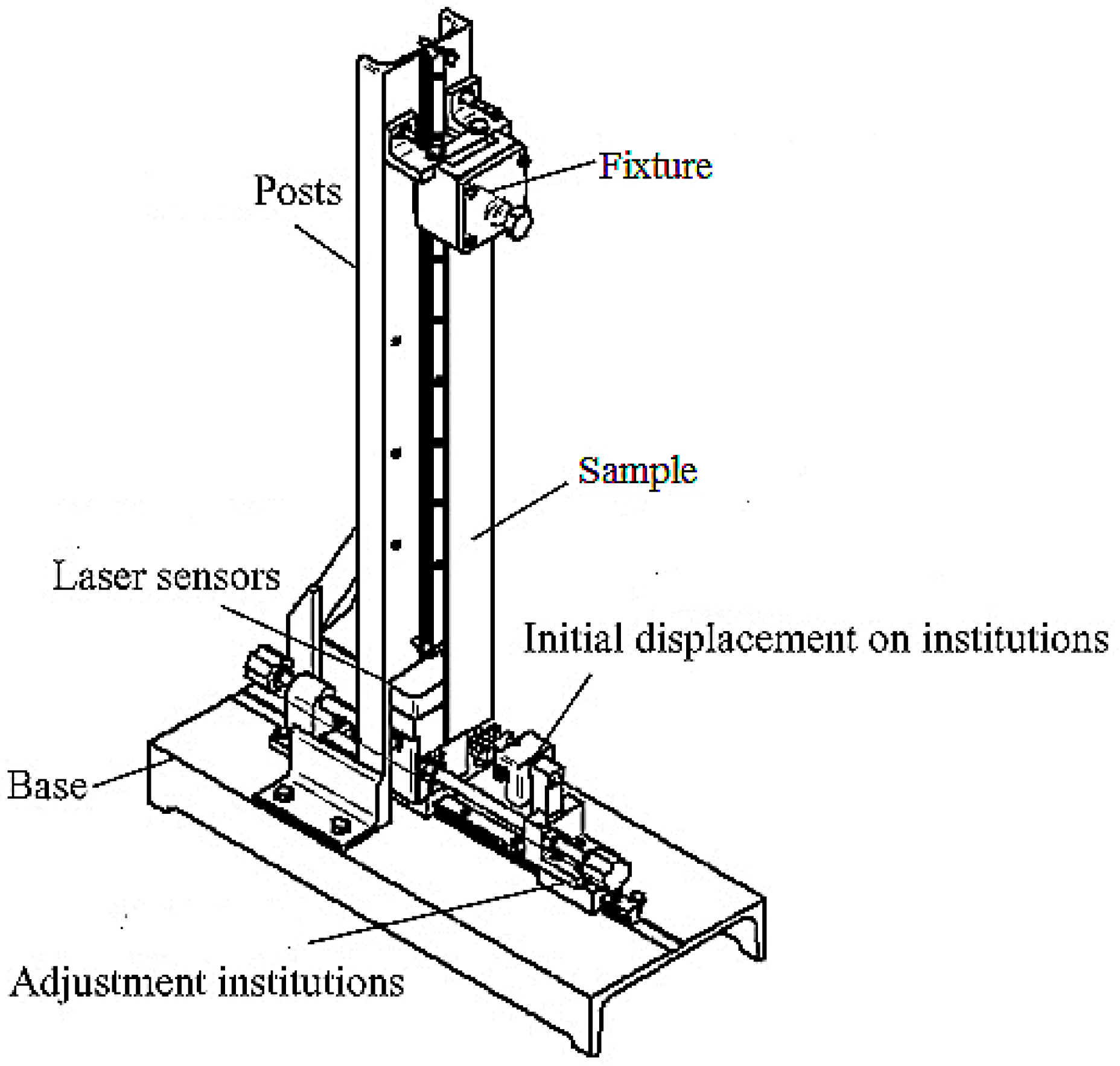
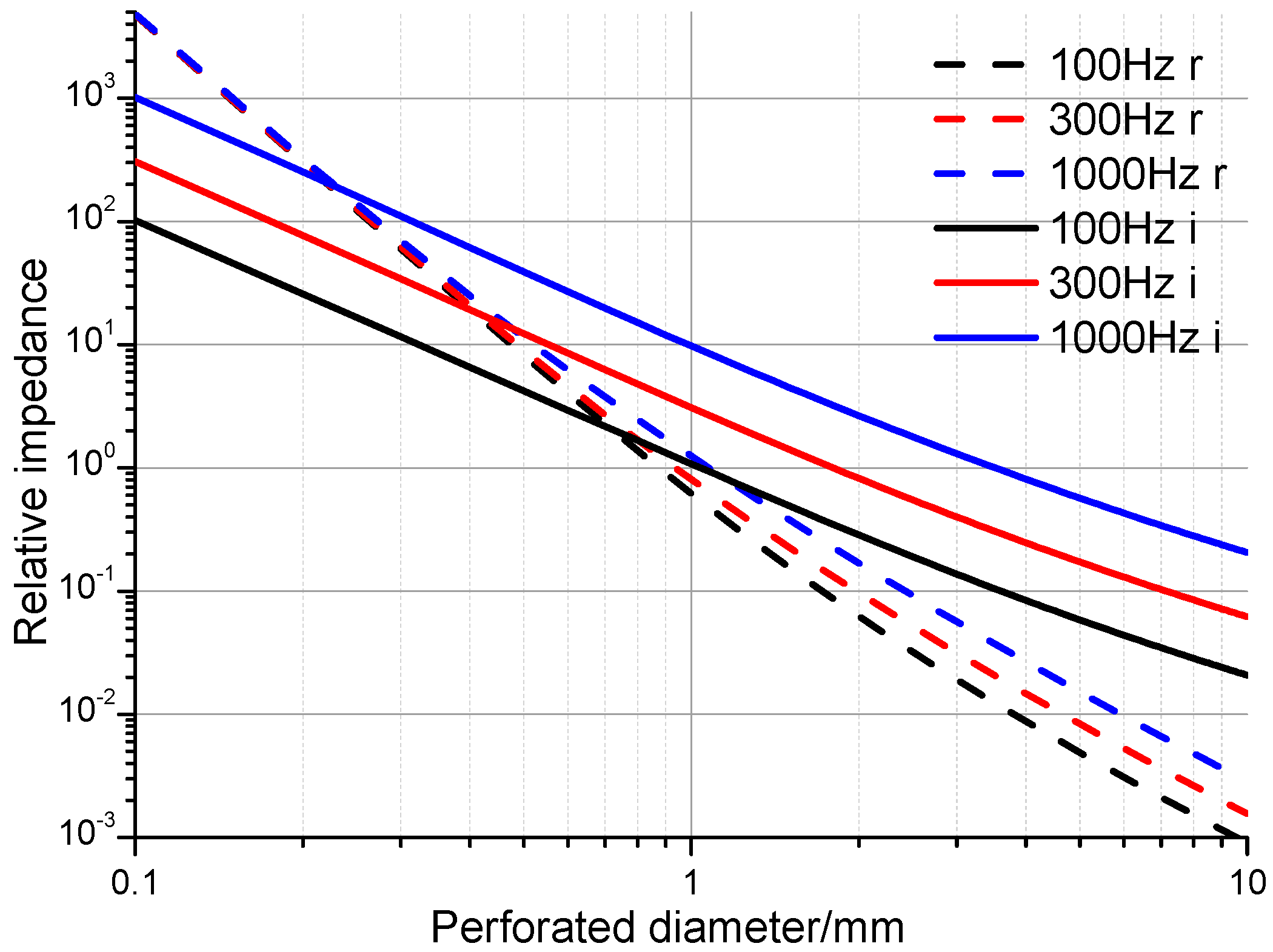
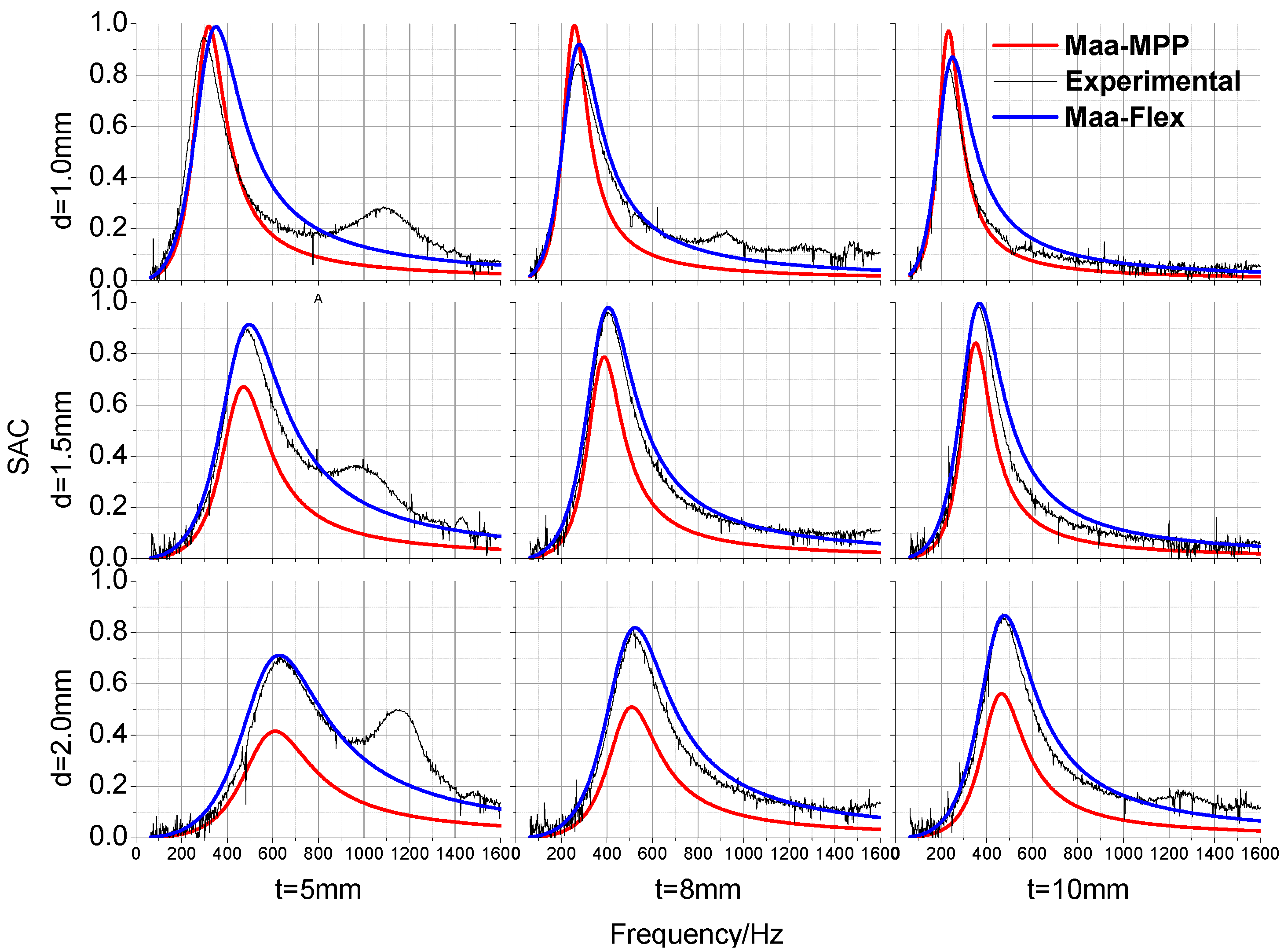
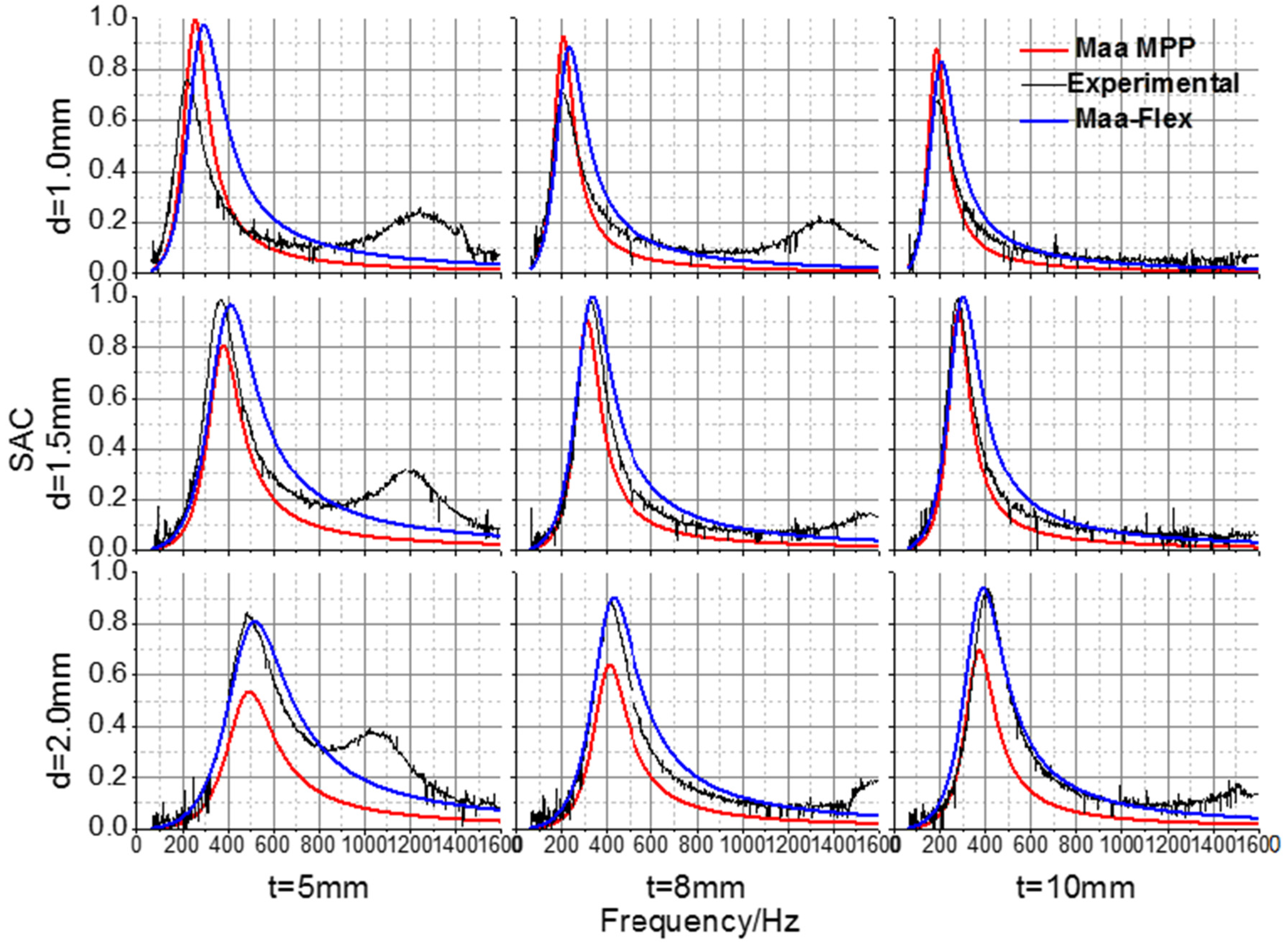

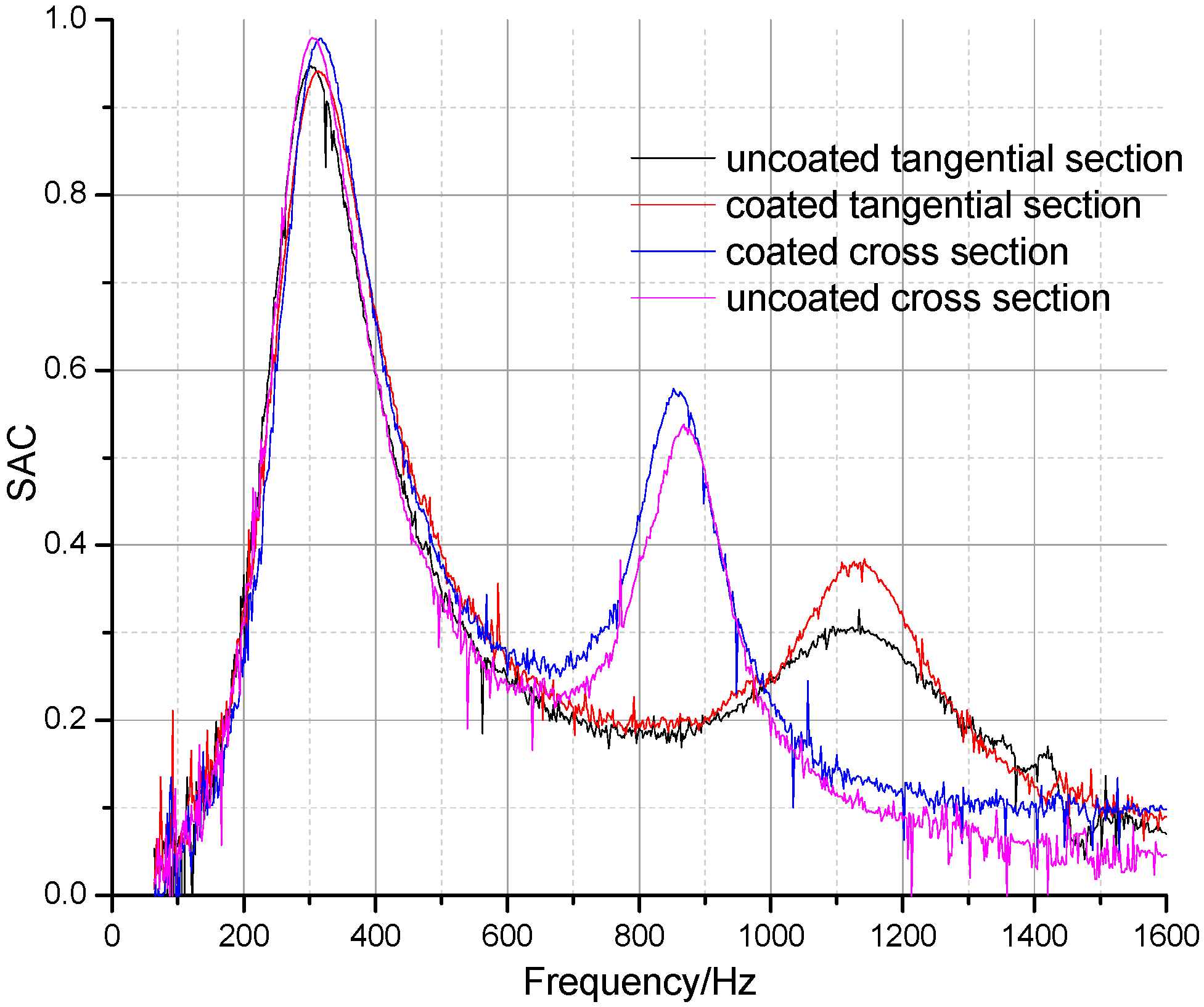
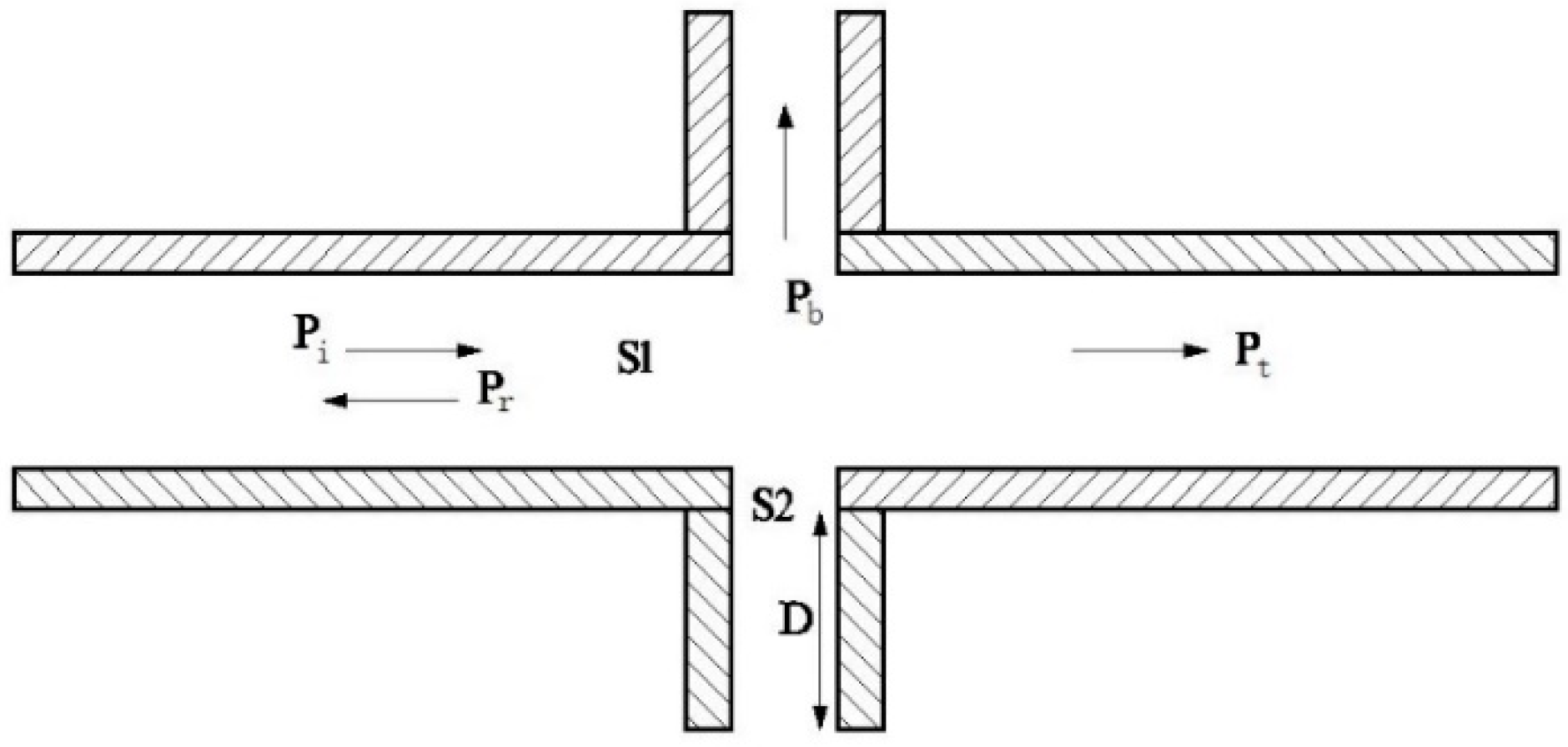
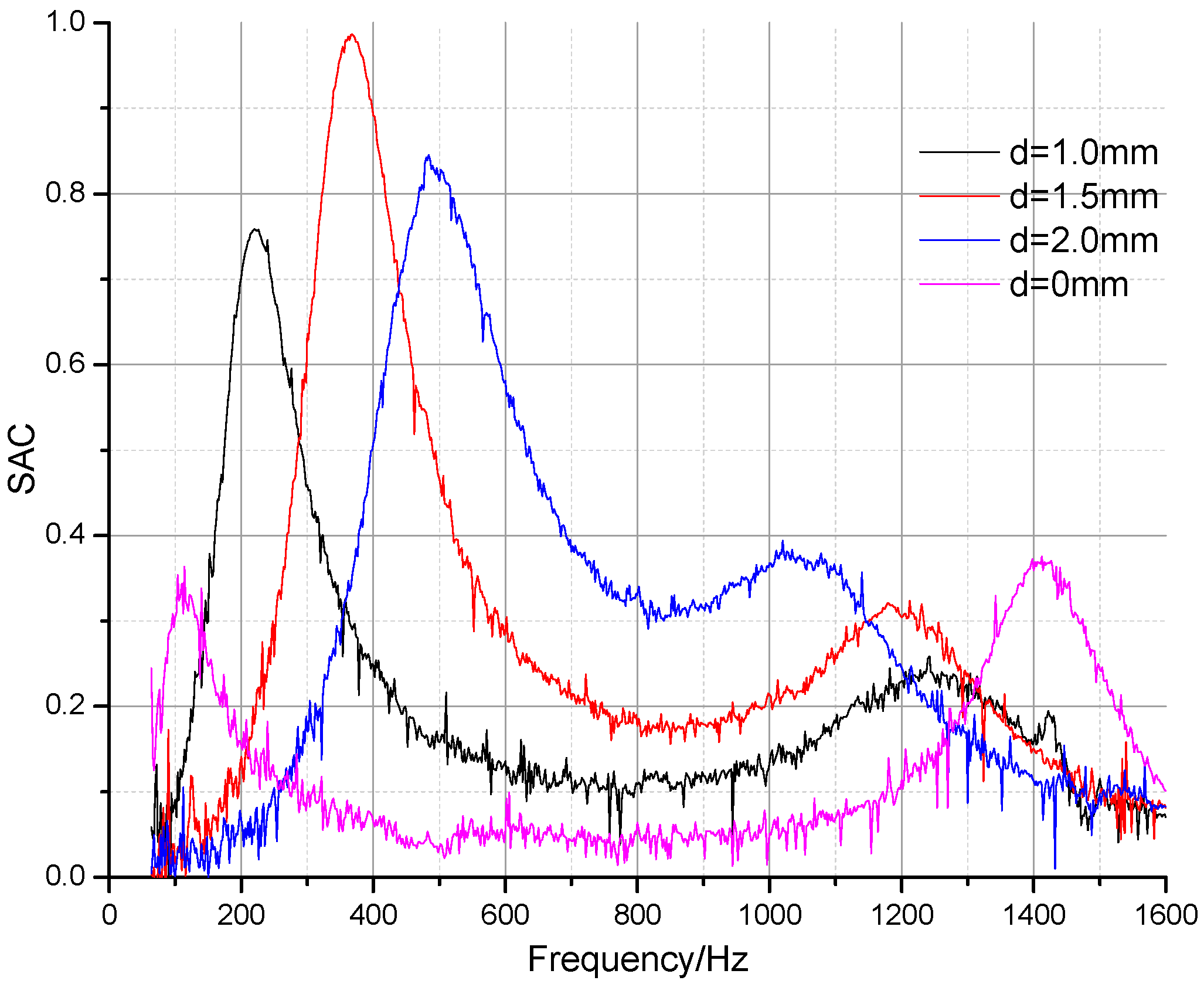

| Hole Distance | Perforation Diameter | ||
|---|---|---|---|
| 1.0 mm | 1.5 mm | 2.0 mm | |
| 8 mm | 1.23% | 2.76% | 4.91% |
| 10 mm | 0.79% | 1.77% | 3.14% |
| b/mm | d/mm | fr/Hz | Ed/MPa | δ | E’/GPa | E’’/GPa | μ |
|---|---|---|---|---|---|---|---|
| – | 0 | 43.948 | 10.077 | 0.025 | 10.077 | 0.081 | 0.0081 |
| 10 | 1.0 | 44.243 | 9.900 | 0.062 | 9.894 | 0.196 | 0.0198 |
| 10 | 1.5 | 48.611 | 9.666 | 0.059 | 9.665 | 0.183 | 0.0189 |
| 10 | 2.0 | 48.641 | 9.519 | 0.053 | 9.518 | 0.161 | 0.0169 |
| Wood Species | fr/Hz | Ed/MPa | δ | E’/GPa | E’’/GPa | μ |
|---|---|---|---|---|---|---|
| Hackberry | 41.551 | 8.737 | 0.057 | 8.736 | 0.159 | 0.0182 |
| Dahurian Larch | 40.933 | 9.222 | 0.045 | 9.221 | 0.131 | 0.0142 |
| Mongolian Scotch pine | 44.618 | 9.389 | 0.059 | 9.388 | 0.177 | 0.0188 |
| Merbau | 43.174 | 10.727 | 0.053 | 10.726 | 0.182 | 0.0170 |
© 2016 by the authors; licensee MDPI, Basel, Switzerland. This article is an open access article distributed under the terms and conditions of the Creative Commons Attribution (CC-BY) license (http://creativecommons.org/licenses/by/4.0/).
Share and Cite
Song, B.; Peng, L.; Fu, F.; Liu, M.; Zhang, H. Experimental and Theoretical Analysis of Sound Absorption Properties of Finely Perforated Wooden Panels. Materials 2016, 9, 942. https://doi.org/10.3390/ma9110942
Song B, Peng L, Fu F, Liu M, Zhang H. Experimental and Theoretical Analysis of Sound Absorption Properties of Finely Perforated Wooden Panels. Materials. 2016; 9(11):942. https://doi.org/10.3390/ma9110942
Chicago/Turabian StyleSong, Boqi, Limin Peng, Feng Fu, Meihong Liu, and Houjiang Zhang. 2016. "Experimental and Theoretical Analysis of Sound Absorption Properties of Finely Perforated Wooden Panels" Materials 9, no. 11: 942. https://doi.org/10.3390/ma9110942






